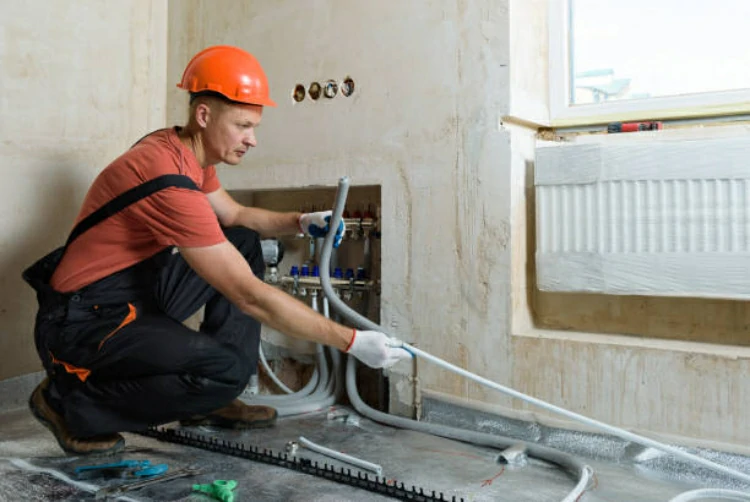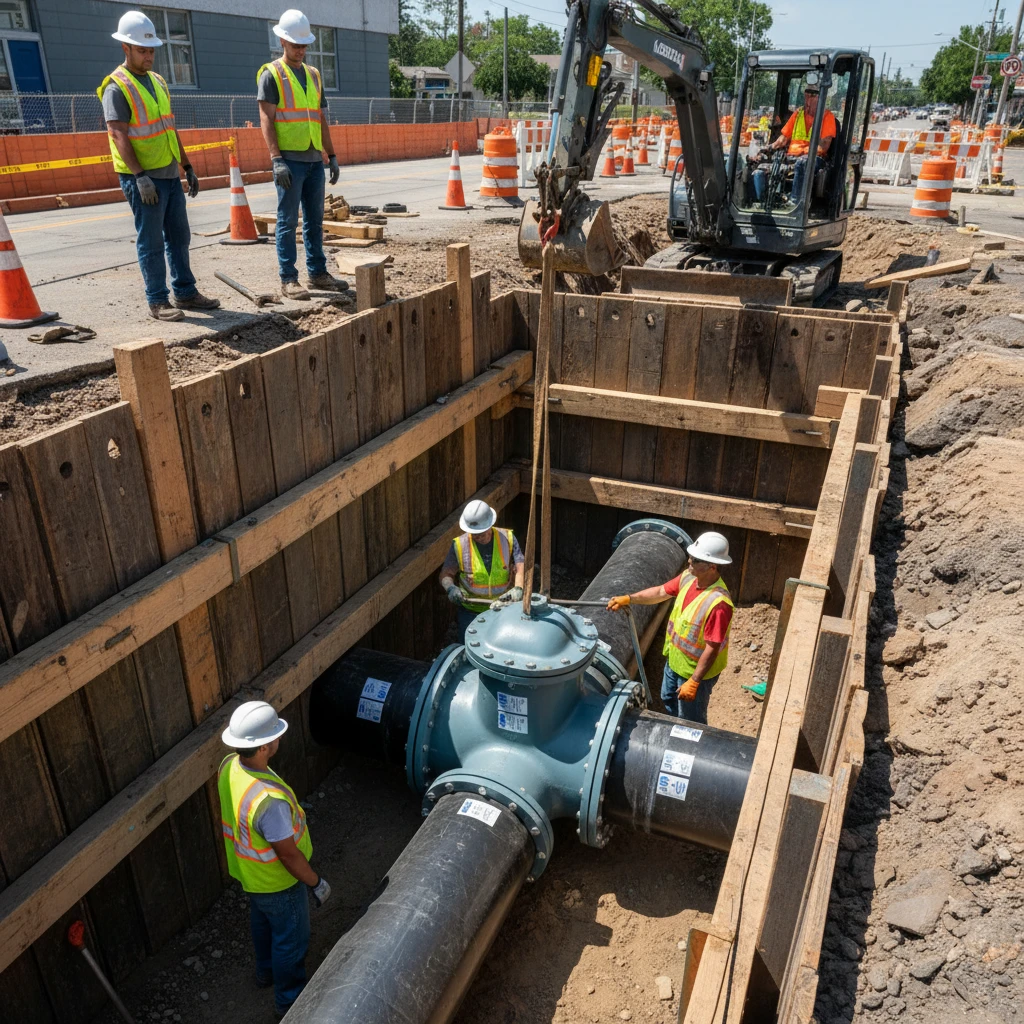PEX Plumbing in Radiant Floor Heating Systems
Introduction to PEX Plumbing
PEX (cross-linked polyethylene) plumbing is widely used in radiant floor heating systems due to its flexibility, durability, and heat resistance. PEX pipes can withstand the elevated temperatures required for radiant heating, making them an ideal choice for distributing hot water throughout the system.
Application of PEX Pipes
In radiant floor heating systems, installers typically lay PEX pipes in a serpentine pattern beneath the floor surface. They secure the pipes to the subfloor or embed them in a layer of concrete or gypsum-based underlayment. As hot water circulates through the PEX pipes, it transfers heat to the floor above, creating a comfortable and energy-efficient heating solution.
Advantages of PEX Plumbing in Radiant Heating
PEX plumbing offers several advantages for radiant floor heating systems. Its flexibility allows for easy installation in tight spaces and around obstacles, minimizing the need for joints and fittings. PEX pipes are also resistant to corrosion and scaling, ensuring long-term durability and performance in heating applications. Additionally, PEX plumbing systems are less prone to freezing and bursting compared to traditional metal pipes, further enhancing their reliability in cold climates.
Types of PEX Tubing
There are three main types of PEX tubing used in radiant floor heating systems: PEX-A, PEX-B, and PEX-C. Each type has its own advantages and characteristics, such as flexibility, stiffness, and resistance to temperature and pressure. PEX-A tubing, produced using the Engel method, is known for its superior flexibility and durability, making it well-suited for radiant heating applications.
Installation and Maintenance of PEX Plumbing
Proper Installation Techniques
Proper installation is crucial for maximizing the performance and efficiency of PEX plumbing in radiant floor heating systems. Installers should follow manufacturer guidelines and industry best practices for sizing, routing, and securing PEX pipes. Proper spacing and layout of the tubing ensure uniform heat distribution across the floor surface.
Insulation and Thermal Mass
Insulation and thermal mass play important roles in the efficiency of radiant floor heating systems. Insulate the underside of the floor to prevent heat loss to the ground or unheated spaces below. Additionally, consider incorporating thermal mass materials, such as concrete or tile, into the floor construction to retain and release heat more effectively.
Regular Maintenance Checks
While PEX plumbing systems require minimal maintenance, regular checks are recommended to ensure continued performance and reliability. Inspect the system for leaks, damage, or signs of wear, and address any issues promptly. Flushing the system periodically can help remove debris and maintain water quality.
Consulting with Professionals
For complex installations or troubleshooting issues, it’s advisable to consult with experienced professionals or certified contractors familiar with PEX plumbing and radiant floor heating systems. They can provide expert guidance on system design, installation techniques, and maintenance procedures, ensuring optimal performance and comfort.
Conclusión
In conclusion, PEX plumbing significantly contributes to the effectiveness of radiant floor heating systems, delivering efficient, reliable, and comfortable heating solutions for both residential and commercial spaces. Its flexibility, durability, and heat resistance make PEX tubing ideal for distributing hot water throughout the system, ensuring a cozy and energy-efficient indoor environment. By grasping the principles of radiant floor heating, appreciating the advantages of PEX plumbing, and applying proper installation and maintenance techniques, property owners can enjoy the benefits of radiant heat for years to come.
IFAN es un fabricante chino de tuberías, accesorios y válvulas de plástico con 30 años de experiencia. Si está interesado en IFAN accesorios de cobre, válvulas de cobre, tuberías y accesorios de plástico, póngase en contacto con nosotros. IFAN le ofrece una variedad de tuberías estándar para satisfacer sus necesidades específicas. Haga clic a continuación para obtener más información sobre la amplia gama de productos de válvulas y productos relacionados con sistemas de tuberías asequibles y rentables de IFAN.
Responderemos a su correo electrónico o fax en 24 horas.
Puede llamarnos en cualquier momento si tiene alguna duda sobre nuestra producción.
Para más información, visite nuestra página web https://ifanpro.com/
Pls Mailto: [email protected]
Whatsapp: + 86 19857948982














Comentarios recientes